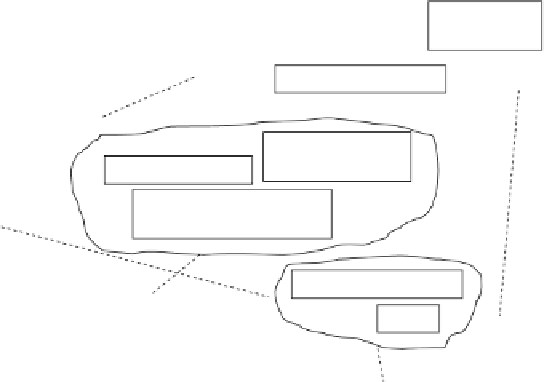Database Reference
In-Depth Information
•
Objects or things about which information must be stored in the database
•
Notations for special object types
•
Inherent characteristics or properties of each object
•
Notations to classify characteristics
•
Method to uniquely identify a particular instance of an object
•
Indication of relationships among the objects
•
The nature of each relationship
•
In each relationship between two objects, indication as to how many of one
object are related to how many of the other
•
Notation to indicate special relationships
•
Any constraints on the elements of data
Figure 5-4 presents the types of components or building blocks that are required
to create a data model. Compare the components shown in the figure with the points
mentioned above and examine whether these components make up a complete list
to reflect real-world information requirements in a data model.
DATA MODELING CONCEPTS
By now, you have a fairly clear picture of what a data model is and why a data model
becomes necessary as a preliminary step for the logical design. You understand what
is meant by real-world information requirements and how the data model must truly
reflect these requirements. You have noted the principle that a data model is a
replica of the real-world information requirements. Also, you have realized that
COMPONENTS
OBJECT
INSTANCES
DATA MODEL
OBJECT TYPE
StudentName
SPECIAL OBJECT
StudentID
STUDENT
SPECIAL
RELATIONSHIP
RELATIONSHIP
SocSecNo
HOW MANY
INSTANCES RELATED
CHARACTERISTIC
TYPE
CLASS
ClassNo
ClassDesc
Figure 5-4
Data model components.





Search WWH ::

Custom Search